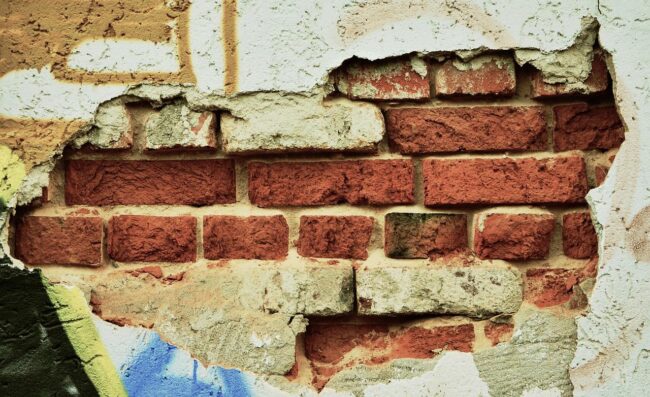
Land manipulation and terrain management are central to the practice of landscape engineering, a discipline that merges the artistry of design with the precision of engineering. Among the most critical features in this field are retaining walls, which serve the dual purpose of functional infrastructure and aesthetic augmentation. Professional retaining wall builders possess an intricate understanding of soil mechanics, hydrostatic pressure, and structural integrity, enabling them to master the challenges posed by varied landscapes.
Understanding the Role of Retaining Walls
Retaining walls are structures designed to restrain soil to unnatural slopes. They are often employed in areas where the landscape needs to be shaped significantly, such as in creating terraces on sloped ground, alongside roadways, or in residential developments. The walls act as a stabilising force, preventing erosion and providing support for vertical or near-vertical grade changes.
Materials and Techniques in Retaining Wall Construction
The efficacy of a retaining wall is significantly influenced by the choice of materials and construction techniques. Builders might use stone, concrete, bricks, or timber, considering factors such as local climate, soil properties, and the wall’s intended height. The most professional builders harmonise these elements to ensure longevity and durability.
The Science Behind Soil Mechanics
At the foundation of retaining wall construction lies soil mechanics. This branch of civil engineering involves evaluating the physical properties of soil and how it behaves under various conditions of stress, moisture, and load. Experienced retaining wall builders factor in soil analysis to predict how the wall will stand up to environmental stresses, a critical component in ensuring long-term stability.
The Importance of Proper Drainage
One of the primary challenges in constructing retaining walls is managing hydrostatic pressure — the force exerted by water in the ground. Without proper drainage, water can build up behind the wall, exerting pressure that can lead to bulging or collapse. Competent builders integrate comprehensive drainage systems to mitigate this risk.
Design Considerations for Aesthetics and Function
The visual aspect of retaining walls is just as important as their functionality. Aspects such as materials, colours, and textures are taken into account to blend the wall into its surrounding environment or to make it stand out as a focal point. The best retaining wall builders view their work as an art, sculpting the terrain to create walls that are pleasing to the eye while serving their structural purpose.
Engineering for Safety
Engineering retaining walls goes beyond mere aesthetics and into the realm of public safety. They are structural elements that must withstand the forces of nature to protect property and lives. Professional builders not only understand but adhere rigorously to industry standards and regulations to ensure their structures are safe and meet the highest quality benchmarks.
Challenges in Retaining Wall Construction
The task of constructing a retaining wall comes with its set of challenges. Variances in terrain, unexpected underground utilities, and erratic weather conditions all play a part in the complexity of the project. Only builders with a depth of experience and a commitment to precision can navigate these challenges effectively.
The Role of Technology in Retaining Wall Building
Advancements in technology have had a significant impact on the field of retaining wall construction. Sophisticated software aids in design, allowing builders to model walls before construction and forecast potential issues. In the field, modern machinery and tools enable the efficient and accurate execution of these designs.
Adaptation to Environmental Concerns
Contemporary retaining wall construction must also take into consideration environmental impacts and sustainability. Industry-leading builders are those who utilise environmentally friendly materials and methods, minimising the carbon footprint of their projects while ensuring the wall’s integrity and ecological compatibility.
The Diversity of Retaining Wall Applications
Retaining walls find their place in a diverse range of scenarios, from residential gardens to expansive commercial projects. Each application brings with it unique requirements and challenges, demanding a tailored approach from professional builders. As such, a builder’s portfolio might include everything from small garden walls to massive soil-reinforcement projects.
Collaboration Between Experts
Constructing a retaining wall is often an interdisciplinary endeavour requiring the collaboration of landscape architects, engineers, and construction workers. Each expert brings a different perspective, ensuring that all aspects of the wall’s design and construction are thoughtfully considered and expertly executed.
Choosing the Right Retaining Wall Builders
The success of a retaining wall project fundamentally rests on the expertise of the builders. When selecting a professional, it is crucial to assess their experience, approach to sustainability, technological capacities, and portfolio of projects. Clients should also consider the builder’s reputation for safety and regulatory compliance to ensure a successful outcome.
Conclusion
Professional retaining wall builders embody the harmonious blend of art and science, transforming the challenges of nature into engineered beauty. Their work is pivotal in landscape engineering, providing essential infrastructure that is both functional and aesthetic. With an appreciation for meticulous design, an understanding of the forces at play, and a respect for the environment, these craftsmen shape the world we inhabit into structures that last for generations.
